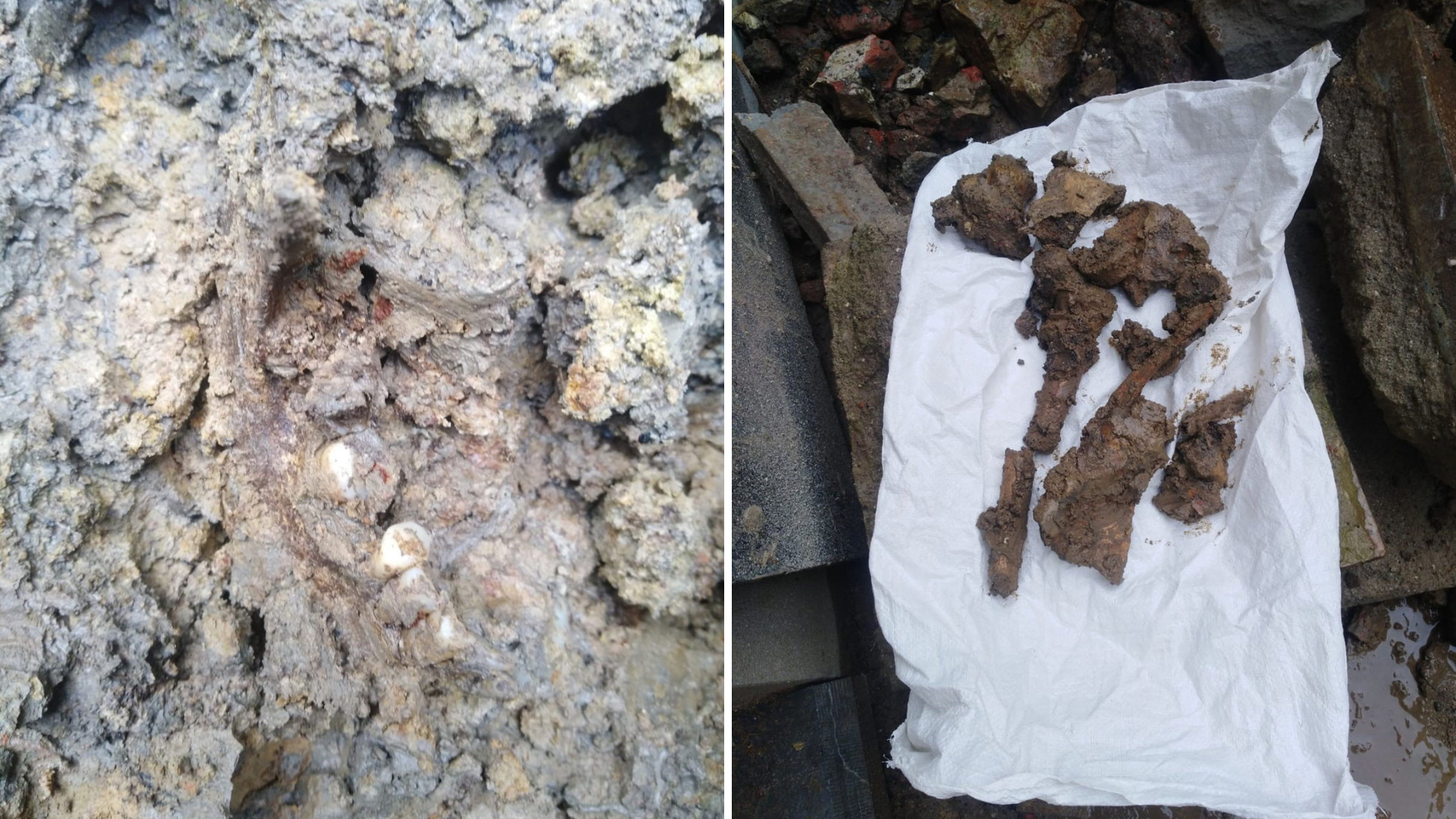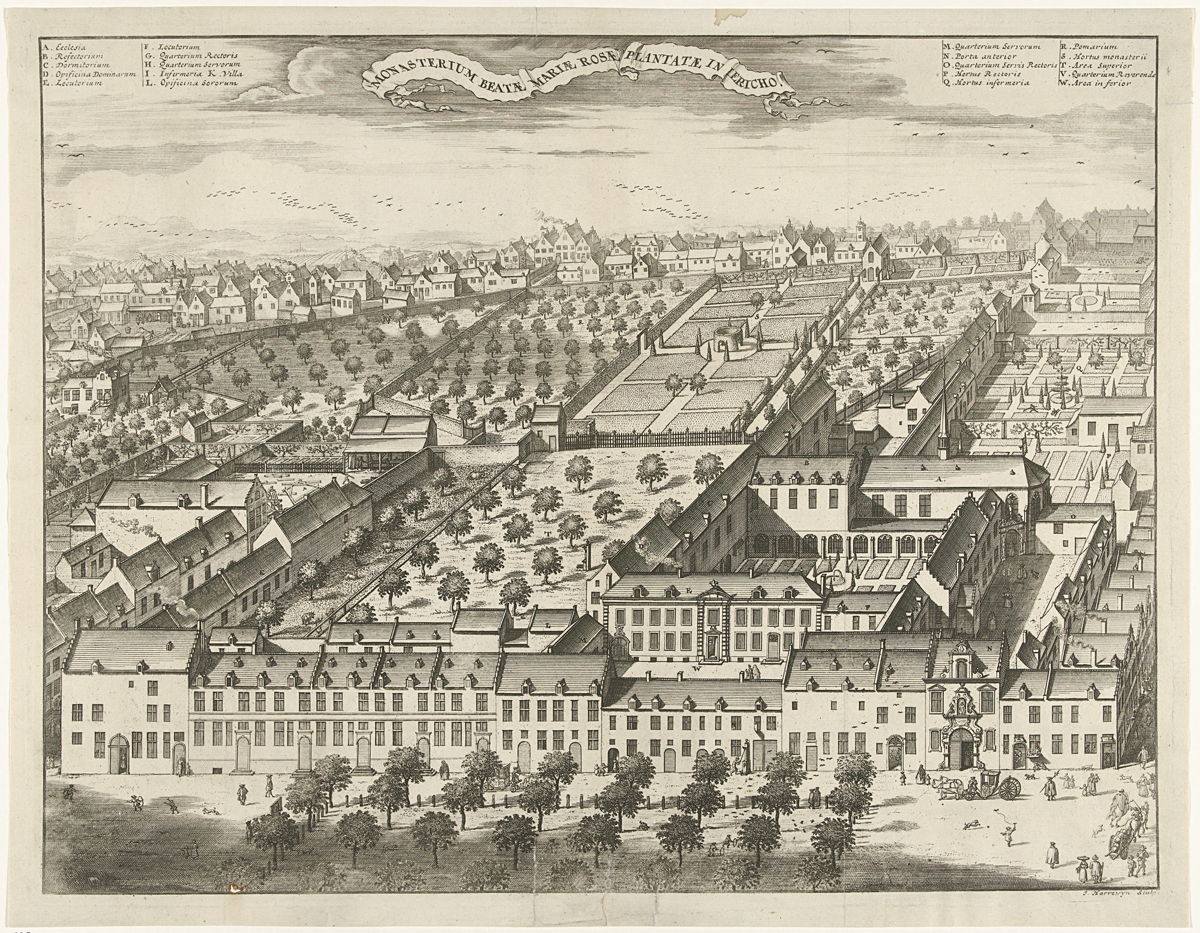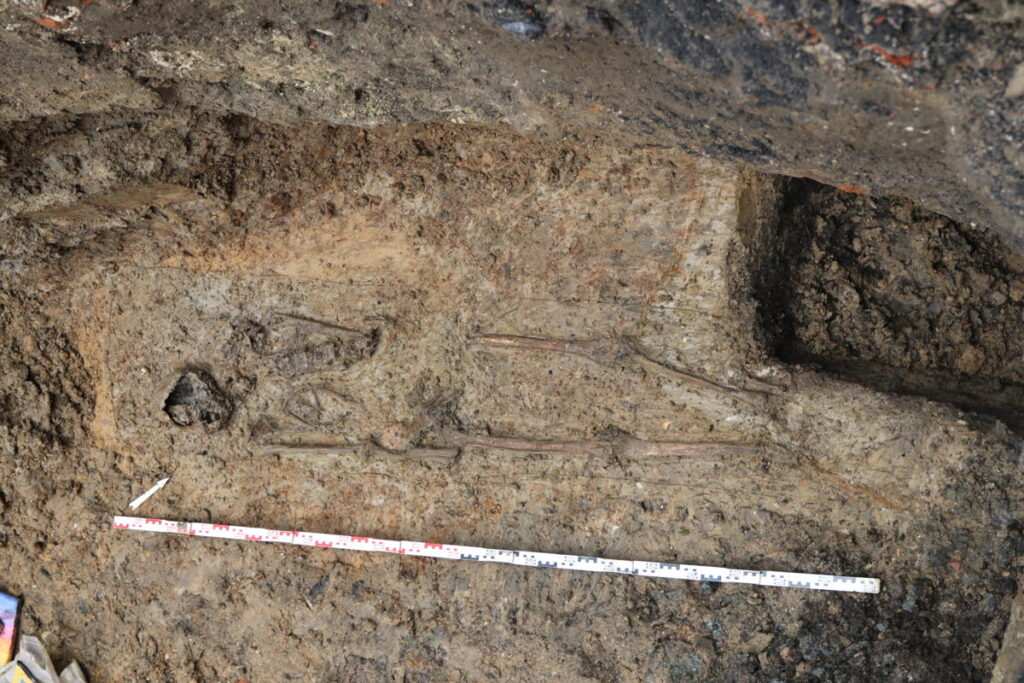Several skeletons were discovered during work at the Dutch-speaking community centre De Markten in the heart of Brussels, with analysis showing they are likely linked to a former monastery.
At the end of November, works were being carried out to build a new well in the inner courtyard of De Markten near Place Sainte-Catherine in the city centre. Two complete and four partial skeletons were discovered by workers in the process. Analysis by urban.brussels archaeologists showed that they came from a former monastery.
"Thanks to preventive archaeology, we know more and more about how our ancestors lived and what Brussels looked like at that time," stated Ann Degraeve, head of archaeological heritage at urban.brussels.

Remains that were found. Credit: Ans Persoons cabinet
"Unfortunately, we have noticed that a lot has been lost over time. But, fortunately, even a small area such as the 25 m² of De Markten can provide a great deal of information."
The underground archaeological atlas of the Brussels region shows that De Markten was built on the site of the monastery of Our Lady of the Rose of Jericho from the 13th to the 18th century.
The area where the skeletons were unearthed was used as a cemetery in the 17th century. From the 17th century, convent buildings were erected here and the access road from the Old Grain Market to the church was created.

A historic map of the monastery of Our Lady of the Rose of Jericho. CRedit: Ans Persoons cabinet
The exact age of the skeletons is not yet known. Examination of the archaeological layers suggests that they date from between the 15th and 17th centuries, perhaps around the middle of the 16th century. However, dating them will remain difficult due to the lack of precise information surrounding the skeletons. No other objects have been found that could give an indication, for example.
The human remains will be transferred to the Institute of Natural Sciences for physical anthropological research. This will help determine how old these individuals were when they died or even whether they were malnourished or suffering from certain diseases.
In December 1925, other skeletons were discovered during excavations at the corner of Antoine Dansaert Street and New Grain Market, in the same area.

